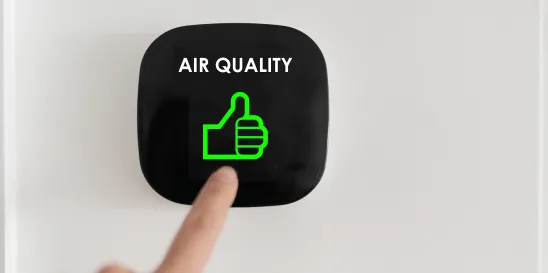Under the federal Clean Air Act, new major sources of air pollutants and major modifications to existing sources are required to obtain preconstruction permits, known as PSD permits, even when locating in an area that attains the National Ambient Air Quality Standards (“NAAQS”). EPA’s proposed revisions to the NAAQS for fine particulate matter (“PM2.5”) would make obtaining the required permit far more difficult. EPA has indicated its intent to take final action on its proposal by the end of the year. Permitting requirements for the revised PM2.5 NAAQS would apply once that standard becomes effective. Generally, new or revised NAAQS have been effective sixty days after notice of their promulgation appears in the Federal Register, although commenters have requested a longer period before any revised PM2.5 NAAQS is effective. These PSD permitting requirements can be triggered by emissions of PM2.5 itself or by emissions of the PM2.5 precursors nitrogen oxides and sulfur dioxide.
In order to obtain the required PSD permit, the owner of a source seeking a permit must commit to using the Best Available Control Technology (“BACT”). This requirement would not be affected by a NAAQS revision. Even in an area meeting the NAAQS, the owner must also demonstrate that the source will not cause or contribute to a NAAQS violation or to an exceedance of a PSD increment intended to limit degradation of air quality. As explained below, EPA’s requirements for these demonstrations may preclude issuance of PSD permits in much of the country if EPA revises its PM2.5 as proposed.
Air quality modeling is used to demonstrate that a planned source or source modification will not cause a NAAQS or increment violation, generally using models and modeling inputs specified by EPA in its Guideline on Air Quality Models. The models and inputs to the models that EPA specifies are inherently conservative. That is, they are intended to produce predictions that are more likely to overstate pollutant levels than to understate them. For example, the source to be permitted and nearby sources must all be assumed to emit at their maximum allowable emission rate or federally enforceable permit limit and, with the exception of modeling nearby sources for a longer period of time, to operate continuously at that maximum rate. It is, however, extremely unlikely that sources will operate and emit in this manner.
Despite these unrealistic modeling requirements, it has generally been possible until now to demonstrate that a source seeking a PSD permit will not cause or contribute to a NAAQS or PSD increment violation. Air quality is good enough that EPA’s conservative approaches to modeling have not prevented a permit applicant from making the required demonstrations. In other words, as illustrated by Figure 1 below, the necessary “headroom” of 1 µg/m3 to 3 µg/m3 between monitored ambient air quality and the current 12 µg/m3 annual NAAQS has usually been available to allow for modeling overprediction in areas to which PSD permitting requirements apply.

EPA’s proposal to lower the level of its PM2.5 NAAQS would change that, however. EPA has proposed to reduce the level of the annual PM2.5 NAAQS from 12.0 µg/m3 to within the range of 9.0 µg/m3 to 10.0 µg/m3. A NAAQS at either of those levels would significantly reduce the extent to which it would be possible to obtain a PSD permit in the United States. Figure 2 illustrates the reduction of the area in which obtaining a PSD permit would be possible with a 10.0 µg/m3 NAAQS.

The area is which PSD permitting would be possible is even less with a 9.0 µg/m3 standard.

The implications of such permitting restrictions are significant. Economic development would be impeded in much of the country. Infrastructure projects could be delayed, if not halted, even in areas meeting the NAAQS. Manufacturers would be motivated to consider siting their facilities outside of the United States in spite of current policies that promote bringing manufacturing back to the United States.




 />i
/>i
